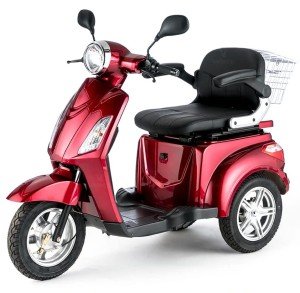veleco-mobility3347
veleco-mobility3347
Guide To Velco: The Intermediate Guide To Velco
Velcro: A Revolutionary Fastening Solution
Introduction
Velcro, a name that has almost become synonymous with hook-and-loop fasteners, has actually revolutionized the way we consider attaching materials. Frequently a staple in various industries and households, Velcro offers a basic yet efficient service to protect objects without the requirement for buckles, buttons, or zippers. This article explores the origins, systems, applications, and benefits of Velcro along with attending to some regularly asked questions.
The Origins of Velcro
Velcro was invented in the late 1940s by Swiss engineer George de Mestral. After a searching journey in the Alps, Mestral became fascinated by the burrs that adhered to his canine’s fur. Upon closer assessment, he understood they worked through a system of tiny hooks that ensnared anything with a loop, including material and fur. Acknowledging the capacity of this natural attachment mechanism, Mestral started a journey to recreate it in an artificial kind. By 1955, he had actually patented his invention, branding it “Velcro,” a mix of the French words “velours” (velour) and “crochet” (hook).

How Velcro Works
Velcro includes two different pieces: a hook side and a loop side. These 2 elements interlock when compressed, creating a strong bond that can be easily launched with an easy pull. The functioning of Velcro can be broken down into these primary elements:
| Component | Description |
|---|---|
| Hook Side | This side features small hooks that catch and hold onto loops. |
| Loop Side | This side includes soft loops developed to accept hooks when called. |
System of Fastening
- Interlocking: The hooks on one side catch the loops on the other, developing a physical interlock.
- Strength: The number of hooks and loops makes sure a considerable holding strength, making it ideal for both light and durable applications.
- Alleviate of Use: Velcro can be disengaged and re-engaged many times without losing its effectiveness, setting it apart from more traditional attachment techniques.
Applications of Velcro
Velcro has actually found application across a myriad of sectors, including:
-
Fashion Industry
- Sportswear
- Shoes (especially kids’s footwear)
- Accessories (belts, bags)
-
Medical Field
- Orthopedic gadgets
- Plasters
- Prosthetics
-
Automotive and Aerospace
- Seat covers
- Interior linings
- Security gear
-
Family Items
- Drapes
- Rugs
- Organizers
-
Industrial Use
- Cabling
- Equipment fastening
- Tools storage
Advantages of Velcro
The appeal of Velcro can be credited to numerous benefits it uses over traditional securing approaches:
- Quick and Easy to Use: No tools are needed, making it user-friendly.
- Flexible: Works on different surface areas and materials.
- Adjustable: Allows for simple adjustment in size (e.g., straps).
- Resilient: Holds up under repeated usage.
- Washable: Maintains its function even after cleaning.
Potential Drawbacks
While Velcro is advantageous in lots of contexts, there are some constraints to be familiar with:
- Noise: The sound of Velcro being pulled apart can be loud in peaceful settings.
- Wear and Tear: Over time, extreme use may lead to fraying or decreased effectiveness.
- Limitations with Heavy Loads: While it can hold significant weight, it might not appropriate for very heavy items.
FAQs about Velcro
1. Is Velcro water resistant?
Yes, Velcro can be made from water resistant products, making it appropriate for outside and marine applications.
2. Can Velcro be recycled?
Absolutely! Velcro is created for duplicated use, and many products can be resealed and opened several times.
3. How do you clean Velcro?
Cleaning Velcro is easy. You can utilize a lint roller or a soft brush to remove debris. For persistent dirt, it may be washed gently with water.
4. Is Velcro strong enough to change zippers?
In numerous applications, yes, Velcro can efficiently replace zippers, particularly in instances where quick attachment and loosening are needed.
5. Exist various kinds of Velcro?
Yes, there are many types, including differing widths, colors, adhesive strengths, and materials developed for various applications (i.e., high-temperature, outside, and so on).
Velcro has actually shown to be a flexible and innovative fastening solution that has penetrated numerous sectors, enriching both daily life and commercial applications. Its ability to provide a reputable and easy-to-use method of attaching makes it an enduring part of modern style. From casual garments to innovative medical applications, Velcro continues to uphold its track record as a staple attachment approach for countless uses. Whether it’s for the style enthusiast or a professional in the medical field, Velcro remains an unsung hero on the planet of fastening innovation.
By changing how we link and protect items, Velcro is a testament to the power of ingenious thinking and simplicity in design. As innovation advances, we can just prepare for Velco much more creative applications for this amazing innovation in the future.



